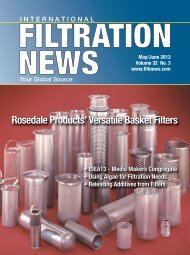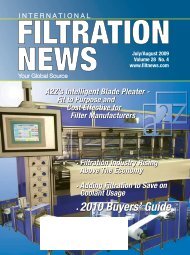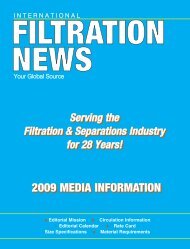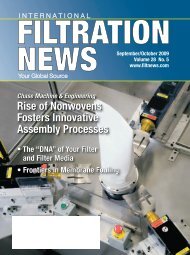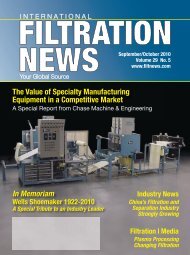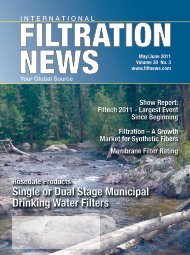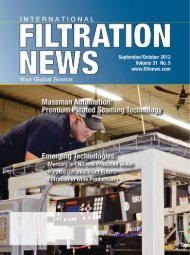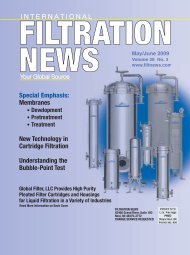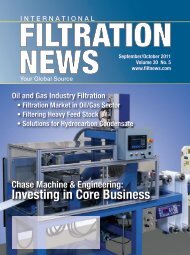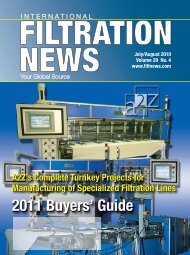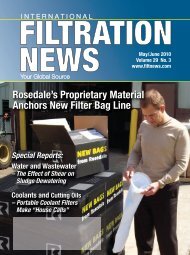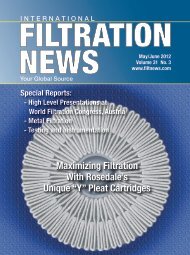Filter Media - Filtration News
Filter Media - Filtration News
Filter Media - Filtration News
Create successful ePaper yourself
Turn your PDF publications into a flip-book with our unique Google optimized e-Paper software.
Ceramic Fiber | <strong>Filter</strong> <strong>Media</strong><br />
A Breakthrough in “In-Situ” <strong>Filter</strong> Cleaning<br />
By Dick Nixdorf, President & CEO, Industrial Ceramic Solutions, LLC<br />
Figure 1. All ceramic fiber<br />
media at 300X magnification<br />
8 • February 2010 • www.filtnews.com<br />
T<br />
oday’s global economy has<br />
placed industry in developed<br />
countries at a competitive<br />
disadvantage with developing countries<br />
in the areas of labor costs and<br />
environmental regulations. The answer<br />
to maintaining market share and<br />
reasonable profit margins is reducing<br />
manufacturing costs and minimizing<br />
environmental compliance expense.<br />
Industrial process efficiency improvements<br />
usually require higher operating<br />
temperatures. Lower emission<br />
control expenses require a need to replace<br />
outdated pollution control systems<br />
with innovative filtration technologies.<br />
Temperature dependent industrial<br />
manufacturing requires<br />
increasing the process exhaust temperature<br />
beyond the limits of the current<br />
cellulosic or polymeric filtration<br />
equipment. The standard solution in<br />
moving to a higher temperature exhaust<br />
is a thermal oxidizer system.<br />
This technology is similar to a catalytic<br />
converter on a car. A ceramic or<br />
metal honeycomb is coated with a<br />
precious metal catalyst that converts<br />
emissions to harmless gas products at<br />
a temperature above the catalyst reaction<br />
temperature. Most industrial<br />
process exhausts do not reach this<br />
catalyst reaction temperature. Therefore,<br />
additional heat must be added<br />
by burning large volumes of natural<br />
gas to increase the process exhaust<br />
stream to the catalyst reaction temperature<br />
as it passes through the ceramic<br />
honeycomb. These costs for<br />
natural gas can range from $100,000<br />
to $5 million/year, depending on the<br />
size of the exhaust stream. An additional<br />
penalty is high CO2 emissions.<br />
One answer to these high operating<br />
costs is a patented, dual-layer, wet-laid,



